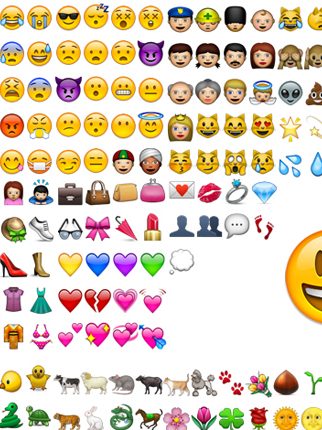‘Alice’s Adventures in Wonderland’ Has Been Translated Into Emoji
Artist, designer and author Joe Hale can now officially call himself an emoji translator. It took more than 25,000 symbols and 300 hours for him to convert Lewis Carroll’s Alice’s Adventures in Wonderland into emojis, a project he took on single-handedly. The idea came about while Hale was reading a lot of Carroll’s work and watching Disney’s Alice in Wonderland “obsessively.” Just like something that could have happened to one of the characters in the story, he fell asleep in a garden and dreamt of Alice’s story in emoji, thus conceptualizing the project. “It truly did come straight from my subconscious,” Hale says. “I was just ready to receive the vision.”
.jpg)
It took five revisions for Hale to finish the entire translation, which depicts a simplified version of the original story. To view the entire translation, purchase Hale’s Wonderland Emoji Poster (also a great way to celebrate Beyond Wonderland coming up March 20 and 21).
Below is an excerpt of a Q&A with Hale by Beckett Mufson of the Creators Project.
Do you consider yourself “fluent” in emoji?
When I finished Wonderland I found I could read it back, but I wouldn’t say I’m fluent. Everyone’s use of emoji is so idiosyncratic, which is what makes it so great. For me it’s a fun writing system I like to use to try and escape English for a little bit and think in pictures.
Walk me through your translation process.
When I was translating I put the emojis on in layers—almost more like painting than writing—until the emoji text was sufficiently dense that I could transliterate the emoji back into a crude version of the original. I think I put about five of these layers on, then did countless read-throughs and cross-checks until I was reading through the text and not changing anything. It was a dreamy, dizzying endeavor.

“And what is the use of a book,” thought Alice, “without pictures or conversations?”
What is the most important aspect of your Alice in Wonderland poster that people might not understand?
That it’s not necessarily meant to be read. I think the idea, “Alice in Wonderland translated into emoji,” is powerful enough to create images in the reader’s mind’s eye, and anybody curious enough can develop these images into their own personal Wonderland in their head and escape to that place. People should just use my poster as a visual aid to think about Wonderland, trip out and explore their imagination. Or, be inspired to read some Lewis Carroll!
To read the entire interview, visit the Creators Project.


